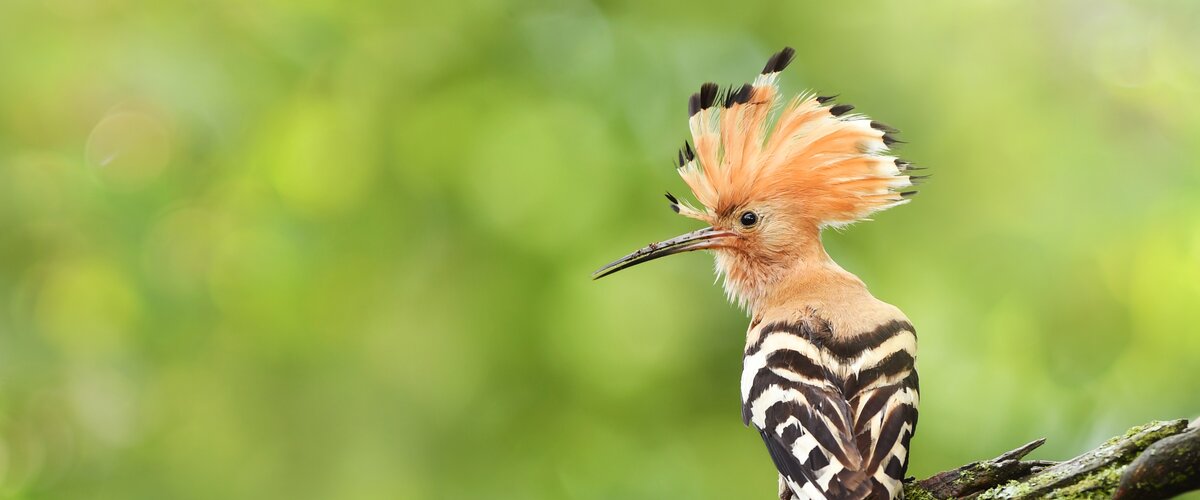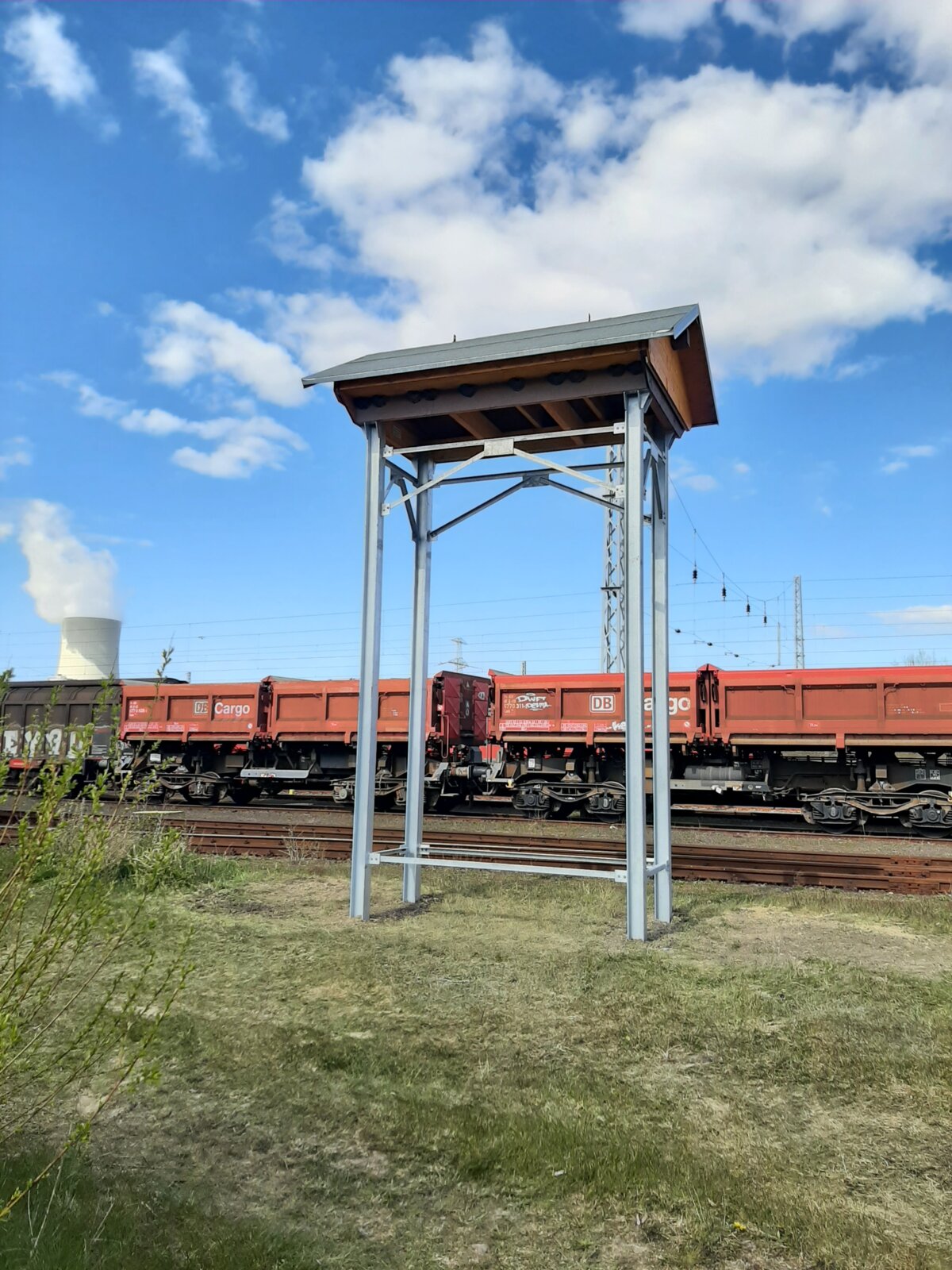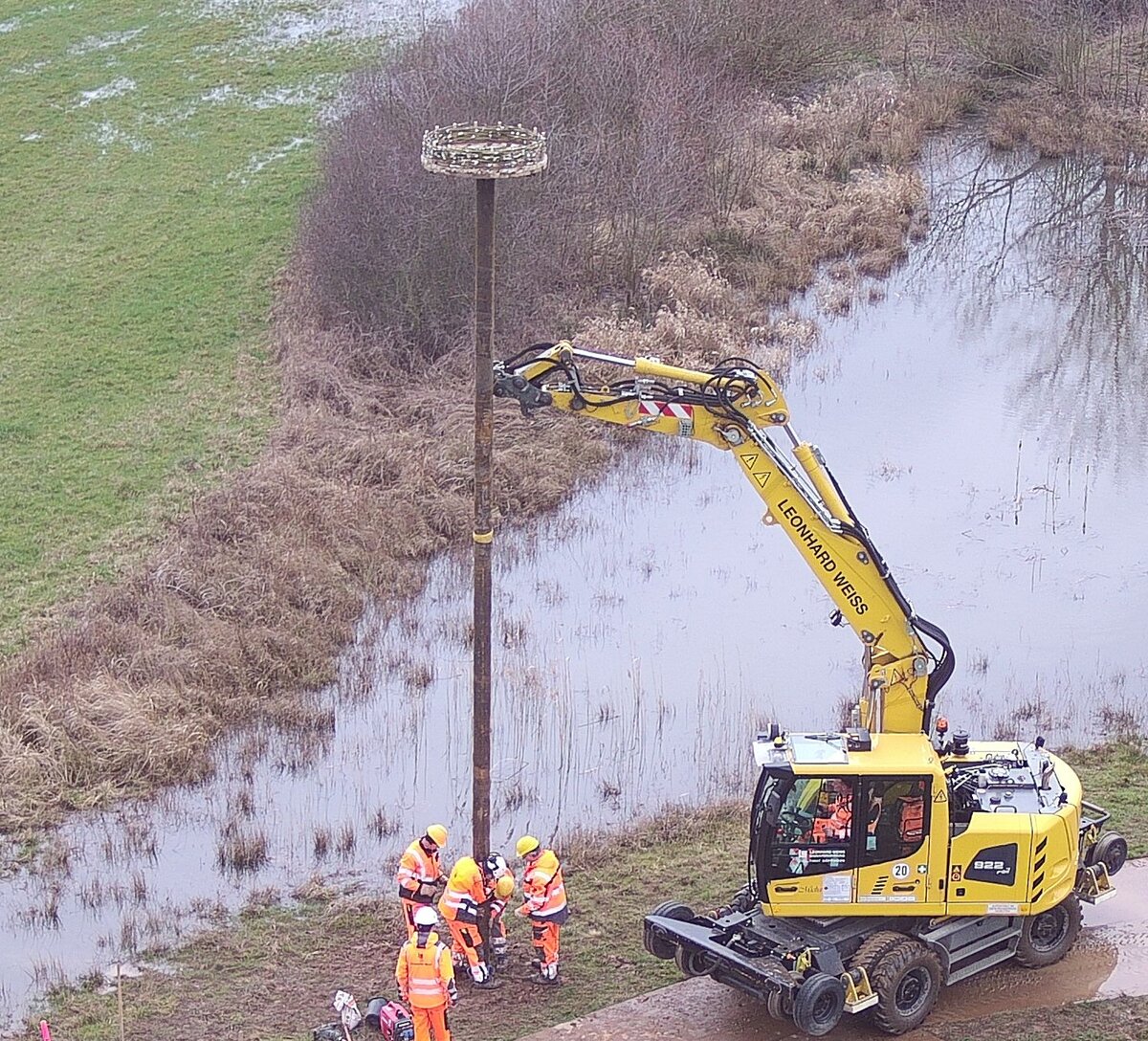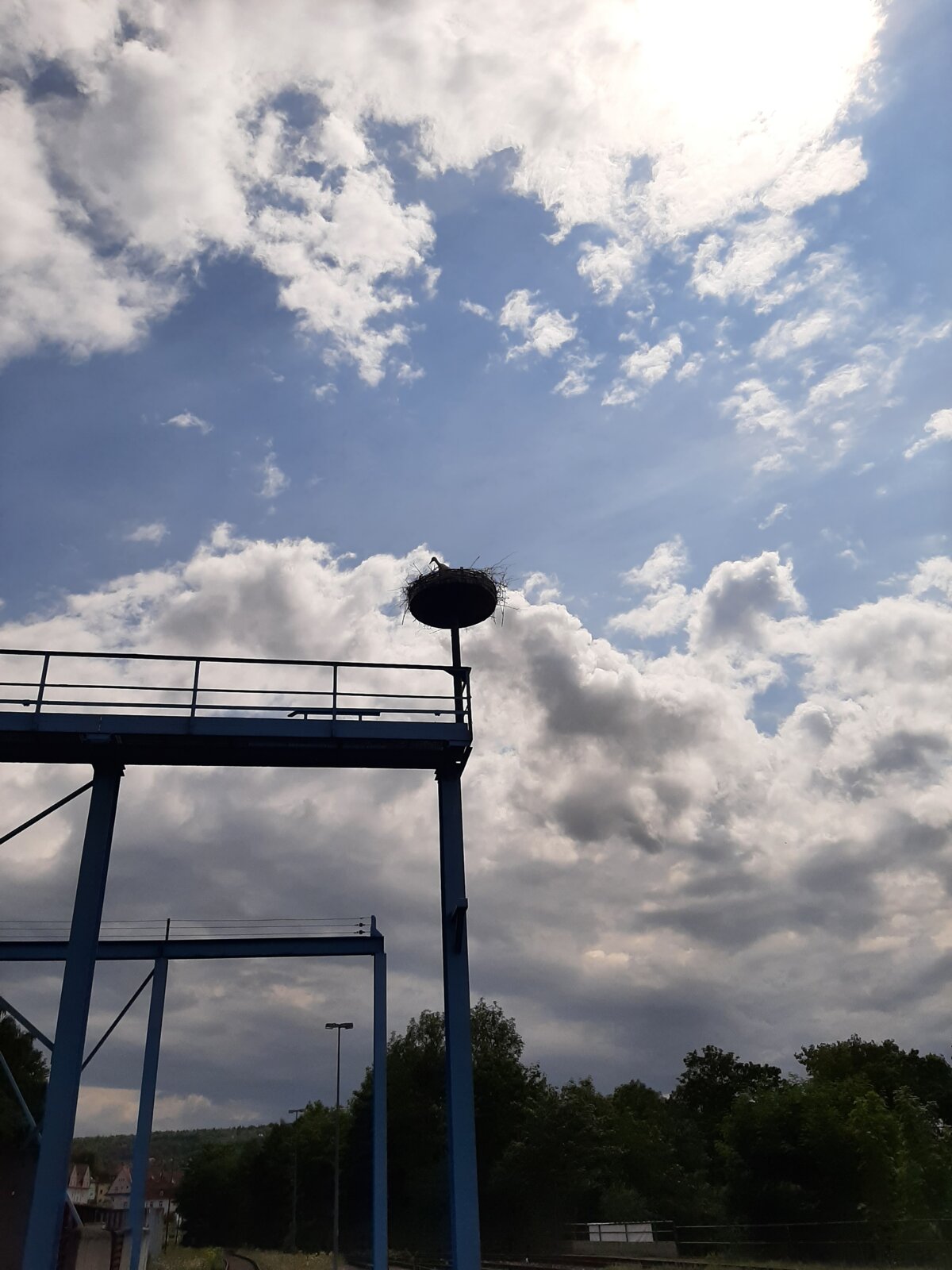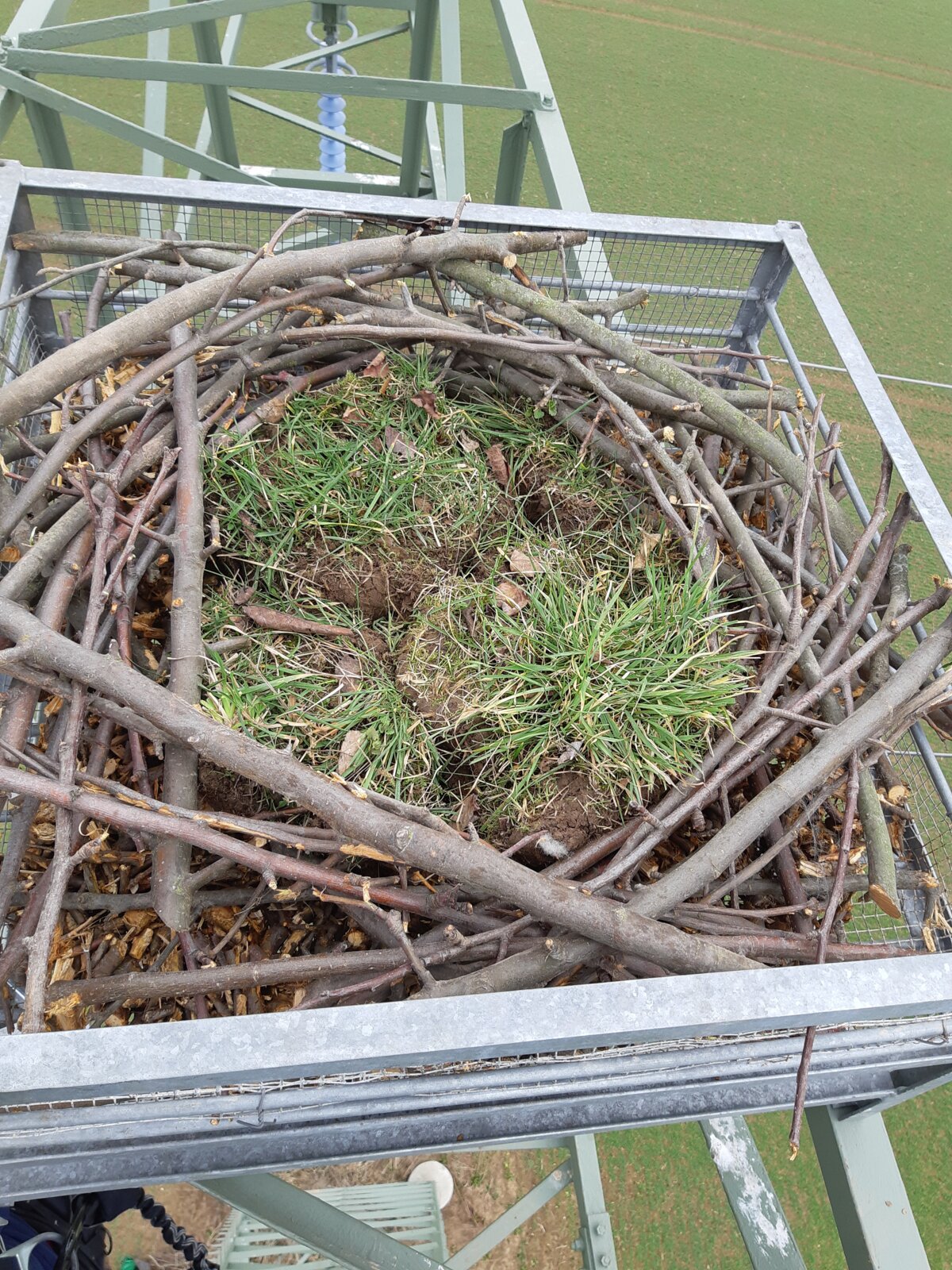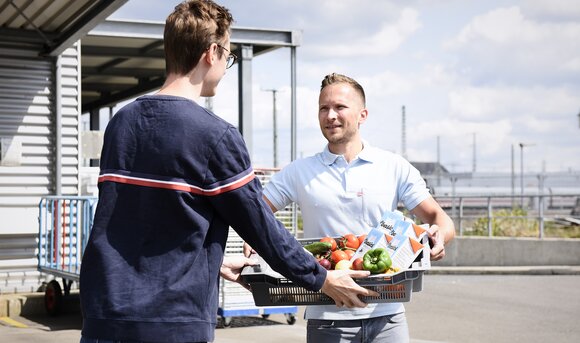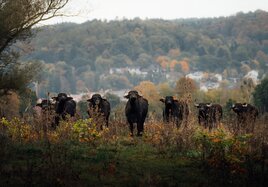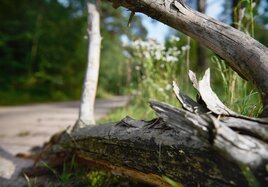Many bird species are threatened by extinction today, including the hoopoe, the swallow, the osprey and the stork. Often, the birds cannot find enough food or places to nest. We want to change this by creating new habitats for our feathered friends.
Whether on depot premises or on land we have restored – wherever it is possible, we are supporting wildlife conservation by building suitable places for birds to nest.
Nesting boxes for hoppoes
We joined forces with the city of Aschaffenburg, for example, to set up several nesting boxes for the rare hoopoe along the local natural heritage trail. The boxes were made at a sheltered workshop in the region. The endangered migratory bird will find a place to breed and plenty to eat there in the future. The grassland, scattered with meadow flowers, is teeming not only with crickets and beetles but also with small frogs and lizards, all of which are favorite delicacies of the hoopoe.
A new home for swallows
When we remove buildings and dismantle facilities, too, we ensure that swallows and other birds are provided with suitable replacement quarters. For this purpose, we have developed an innovative nesting solution in the form of a multifunctional tower. The nesting boxes have a solid wooden core and a roof to protect them from the elements. They are supported on legs some six meters tall and are open on the underside. The birds are safe from animals such as raccoons and martens at this height, which is what makes the unique towers different from other nesting structures.
We erected the first towers for swallows in Schönwalde-Glien and at the DB Cargo depot in Rostock. More are planned. Thanks to the multifunctional design, it is not only swallows who find a comfortable space here: other species such as wagtails, sparrows and even bats have also taken up residence. In our multifunctional nesting towers, swallows, sparrows and bats all find new breeding opportunities.
Protected barn swallows are regular guests at Potsdam-Griebnitzsee station. Every year, these songbirds visit the nests there during their breeding season. This is why NABU (the German Nature and Biodiversity Conservation Union) granted the station its "swallow-friendly house" award in 2018. The Dessau-Rosslau vehicle maintenance depot provides homes for another type of swallow. House martins raise their chicks there safe and sound every year in the double nesting boxes set up for them.
A lofty place to live
In Gelnhausen in eastern Hesse, we built a new nesting structure for storks while working on the upgrade of the Kinzigtalbahn railway. In consultation with the region’s bird and nature conservation associations, we put up a ten-meter high steel mast with a wooden breeding platform on top. A resident pair of storks has already moved into their new home. In addition Deutsche Bahn will create a nearby pond for the roosting birds. Small amphibians such as toads and frogs will be able to live here, too, in the future.
A pair of white storks has also taken up residence at the DB plant in Meiningen, Thuringia. Since the animals had initially built their nest on an exhaust chimney of the paint shop located there, we had to create an alternative. Without further ado, the plant employees built a replacement nesting site at a lofty height using old sheet metal and heating pipes. The new stork nest has already been occupied and offspring are expected.
Stork protection is also of great importance in the construction work along the Kochelsee railroad in Bavaria. Here we are renewing around 600 catenary supports. In the community of Bichl, several storks have settled on two of these catenary masts. These masts will therefore remain untouched by the construction work so that the animals can continue to breed undisturbed. The Landesbund für Vogel- und Naturschutz e. V. (State Association for the Protection of Birds and Nature) regularly checks the nests, so that several young animals have already been raised here.
A room with a view
Near the Koberbach Dam in Werdau, Saxony, we joined forces with the local nature conservation authority to install a nesting box for the local osprey on top of one of our electricity pylons. The metal frame covered with branches, moss and wood shavings, and perched 25 meters above the ground, is ready for the osprey pair to move in. The pylon’s location is ideal: it is in a field close to the lakes where these rare birds of prey find their food.
